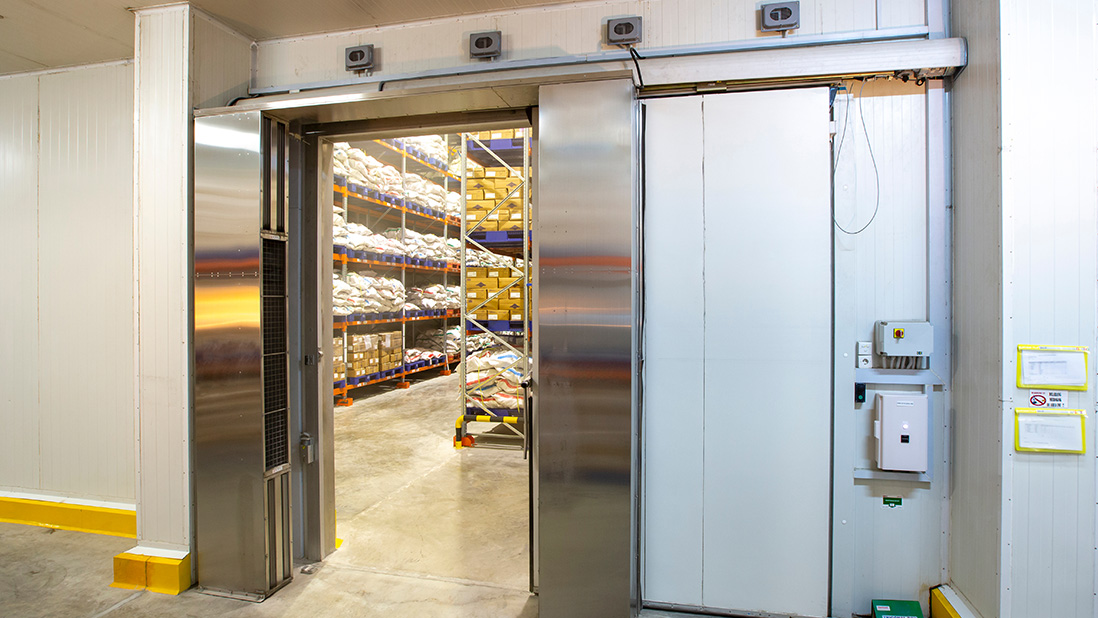Maintaining commercial refrigeration equipment
Commercial refrigeration systems vary in configuration and size from small refrigerators and freezers to large walk-in cold storage spaces and trailers. A loss of refrigeration, even for a few hours could damage food products and lead to a significant loss of business income. Physical damage to refrigeration compressors and their accompanying electric motors normally results in expensive repairs. Fortunately, commercial refrigeration breakdowns and repairs can be prevented with maintenance.

Depending on the size and type of refrigeration system configuration, commercial refrigeration systems have replacement values ranging from $3,000 to $11,000 per ton of refrigerant capacity. Refrigeration systems requiring lower temperatures and larger amounts of refrigerant piping can increase system costs.
Claims loss experiences have shown that lack of maintenance is frequently the cause of refrigeration system breakdowns. Regular maintenance keeps refrigeration systems in good condition for longer periods of time, saving repair and replacement costs in the future. Technicians can identify small issues and repair them before they become major problems.
Temperature monitoring
Commercial refrigeration temperature monitoring systems use sensors inside refrigerators, freezers or walk-in coolers and trailers. Electronic and digital technology make it possible to monitor walk-in coolers and freezers 24/7 so cold storage facility personnel can receive alerts via text or email for temperature changes outside normal ranges. The number of sensors required for monitoring storage conditions can range from five sensors for small spaces to over 20 sensors for larger areas.
Refrigeration system maintenance is designed to maximize reliability, safety, energy efficiency and decrease the potential for breakdown. Responsibility for refrigeration equipment maintenance is usually a combination of in-house staff and a third-party refrigeration contractor.
Maintenance
Here are helpful maintenance tips to minimize the potential for loss:
- Clean the condenser coil. Keeping the condenser coil clear of excess dust and dirt is essential for the refrigeration system to efficiently transfer heat and send cold air into refrigerated spaces. Most manufacturers recommend cleaning once every three months.
- Once per year, a qualified refrigeration maintenance person should verify defrost timer control settings to ensure the defrost cycles are set properly. High levels of ice/frost put stress on other refrigeration system components like the compressor and can damage it.
- Check electrical components (contactors, capacitors, etc.) for signs of corrosion or damage. Scheduled maintenance is required to tighten all electrical connections.
- Keep the area by the evaporator coil clear and clean on a consistent basis. Avoid cramming the interior with a lot of items, especially if they're piping hot. Blocking airflow by the vents inside the unit can cause the coil to freeze, leading to water leaks and a rise in cabinet temperature.
- Check the gaskets often. A split or crack can prevent the door from sealing shut, causing cool air to exit the fridge's interior. If a gasket is broken, make sure to replace it with the appropriate manufacturer recommendation.
- Remove dust or debris from air filters. Buildup can prevent air in the unit from venting properly and damage the air filter.
- Check the drain pan and any tubing that could experience frequent buildups.
Additional resource:
